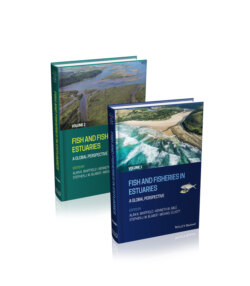Читать книгу Fish and Fisheries in Estuaries - Группа авторов - Страница 81
3.5.7 Climate change
ОглавлениеEffects of ongoing climate change on reproduction of estuary‐dependent and ‐associated fishes will be substantial for some species (see Sections 3.2.2, 3.4.2 and Gillanders et al. 2022). Rising temperatures, changes in estuarine hydrography, rising sea level, increasing instances of hypoxia and acidification and associated shifts in spawning phenology are likely to be major effects (Ojaveer & Kalejs 2005, Nye et al. 2009, 2014, Gillanders et al. 2011) as climate change continues to affect shallow estuarine systems (James et al. 2013, Wallace et al. 2014, Elliott et al. 2019). Related, naturally occurring weather events also can pose hazards to reproduction of estuary‐associated fishes (see Section 3.2.2.5). A recent review of climate‐induced effects of acidification on settlement and metamorphosis of fish early‐life stages indicated that, based on a relatively few estuary‐associated species, these key life‐history processes could be compromised, e.g. in the catadromous latid Lates calcarifer (Espinel‐Velasco et al. 2018) although effects might not be realised for many decades. Incidence of harmful algal blooms (HABs), noted above, that may disrupt and potentially reduce reproductive success of estuarine fishes is likely to increase in response to changing climate (Glibert 2016).
The influence of changing climate is evident in a 26‐year time series of larval ingress for fishes in a Mid‐Atlantic (USA) estuary, where the number of higher‐latitude species is now reduced and the number of lower‐latitude species has increased (Morson et al. 2019). There are documented northward shifts in distributions and fishery landings of adults of estuary‐associated species, for example the paralichthyid Paralichthys dentatus, on the US east coast (NEFSC 2016, 2019). Although shifts in distribution of the adult stock do not confirm changes in reproduction and/or recruitment, or that populations are migrating in response to climate change, the weight of evidence indicates that climate is a driving force that may threaten reproductive success and cause major shifts in spawning areas and seasons in some species.
